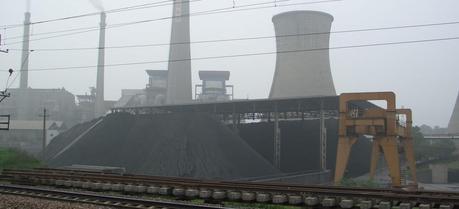
In the five years since the China Energy Group of the Department of Energy’s Lawrence Berkeley National Laboratory (Berkeley Lab) released its last edition of the China Energy Databook, China has achieved several dubious distinctions: it surpassed the United States in energy consumption and energy-related emissions of carbon dioxide, China now accounts for 47% of global coal consumption and is on track to become the world’s largest oil importer.
With these important shifts in the global energy landscape, the eighth edition of the China Energy Databook is being released this week. The China Energy Databook is the most comprehensive publicly available resource known to exist covering China’s energy and environmental statistics. The China Energy Group researchers have amassed an enormous trove of data from firsthand sources and organized much of it into a relational database, making it far more useful for research and analytical purposes.
“We have gathered statistical information on energy and energy demand drivers from all different resources, such as the China Environment Yearbook, the Transportation Yearbook, the Power Yearbook, the Iron and Steel Yearbook, the Cement Almanac, statistics of oil companies and power companies,” said Lynn Price, head of the China Energy Group. “A library collection like this doesn’t exist anywhere else in the world.”

China Energy Group members Hongyou Lu, David Fridley, John Romankiewicz and Lynn Price (left to right) contributed to the 8th Edition of the China Energy Databook. (Photo: Roy Kaltschmidt / Berkeley Lab)
One of the most important changes in the new edition is that it captures the extensive retroactive changes China has made to its energy consumption data. “They used a lot more coal than they originally admitted to, several hundred million tons more,” said David Fridley, one of the two lead editors of this and several previous Databooks. “Like many other people, we were writing articles around 2000 about the decline in China’s energy consumption in the late 1990s. Now the decline has completely disappeared—they found it. It was underreported.”
Another major shift is that China has become a voracious energy importer, especially of coal and liquefied natural gas. “Like the United States, China has become among the world’s largest importers of oil, gas and coal,” Fridley said. “Compared to 2005-2006, it has probably doubled its presence. Certainly in coal—they imported virtually no coal in 2005 and they’re now importing close to 200 million tons. This is reflected in our chapter on imports and exports, which shows the impact of China on world energy markets.”
One chapter is devoted to international comparisons, allowing users a quick way to see how the nature of energy and economic activities differs from country to country. The main story in China? “The continued dominance of coal and the continued dominance of industry,” Fridley said. Industry consumes two-thirds of China’s energy, compared to less than 30 percent in the United States. Relatedly, transportation accounts for only 15 percent of China’s energy consumption, compared to 30 percent in the United States.
The other part of the story is China’s dramatic jump in renewable energy production. Whereas the last version of the Databook did not even have data on wind and solar power generation, China is now among the top wind power producers in the world.
The Databook contains information for energy and environment at both the national and provincial levels, mainly from 1980 through 2011, with some data series beginning in 1949. There are bright spots in the data on China’s environment. Levels of sulfur dioxide, a pollutant emitted largely by power plants, and chemical oxygen demand, a measure of organic pollution in the water, are down even as CO2 emissions have continued to rise.
“What they don’t report is PM2.5 [or fine particulate matter] , which has moved to a position of top concern as major pollution events have hit north China,” said Fridley. “Instead they just have a general category of particulates.”
The China Energy Databook has undergone several changes in format over the last few decades. The first four editions were paper-based. But when the publication topped 400 pages, distribution was switched to CDs in 2001. At that time data related to China’s energy balance was put in a relational database and other datasets, such as energy efficiency, were put in spreadsheets.
The latest edition, with more than 140,000 datapoints, is the first that will be available for download.
“One of the missions of our group is helping the rest of the world understand what’s going on in China,” said Price. “Unfortunately, we receive very limited funding to produce this extremely popular publication. Let’s just say this edition has been a labor of love.”

